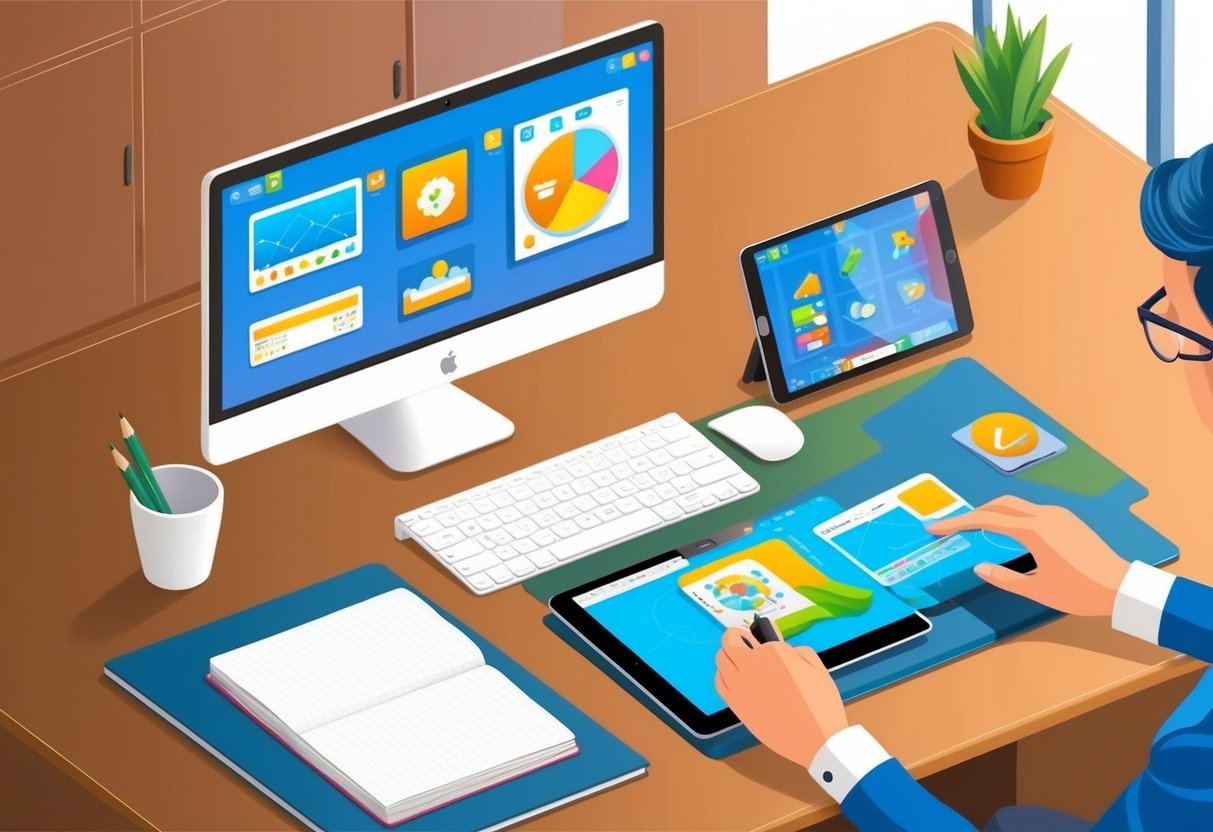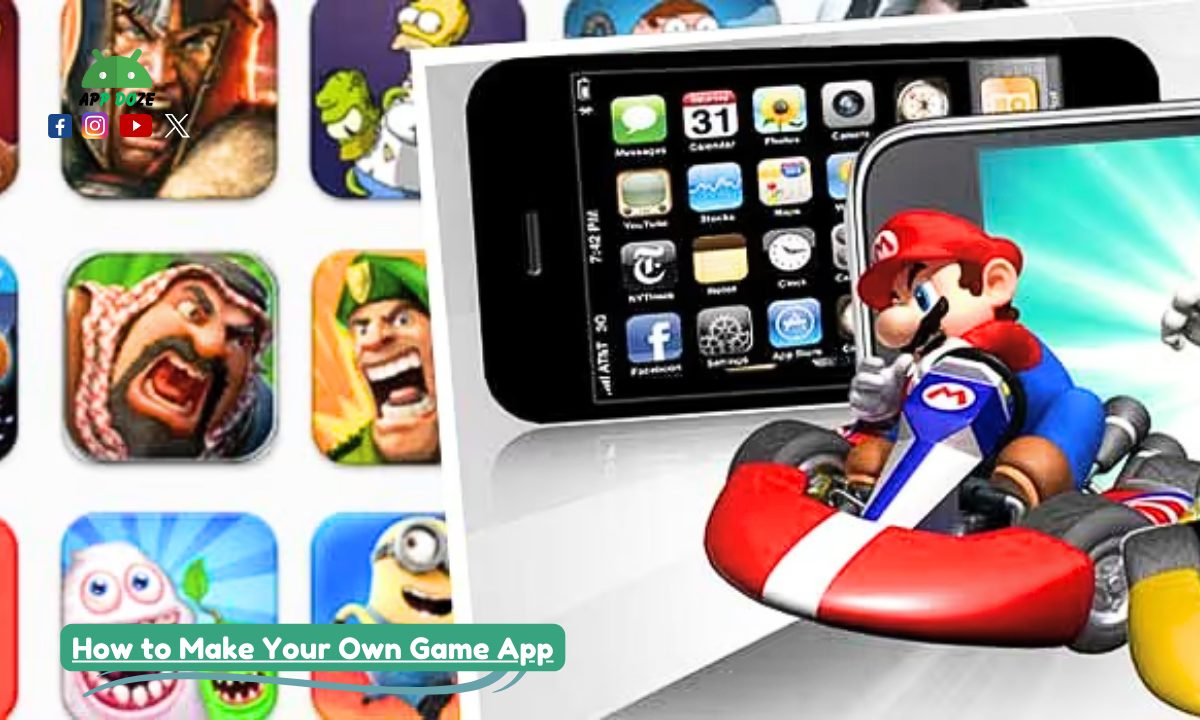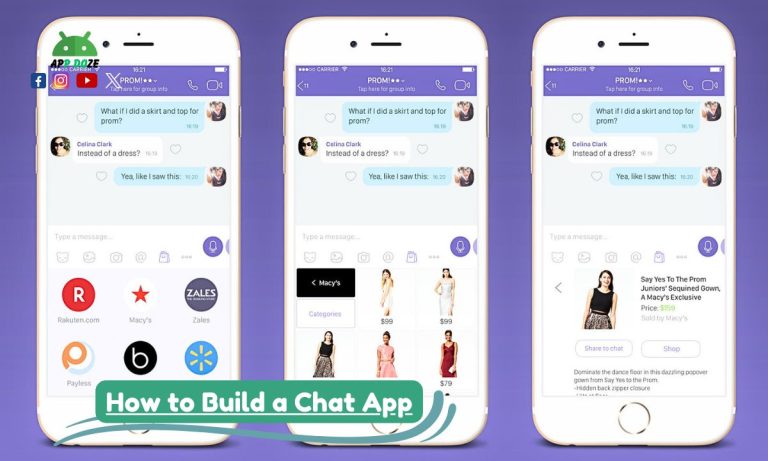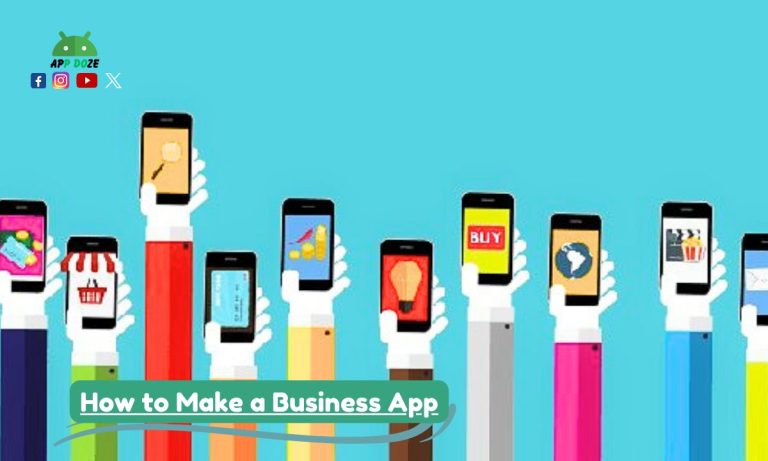Creating your own game app has become increasingly popular in recent years. With the rise of mobile gaming and the availability of powerful development tools, anyone with a passion for gaming and creativity can bring their ideas to life. Whether you’re a beginner looking to explore game development or an experienced developer aiming to create something unique, learning how to make your own game app can open up new possibilities.

In this blog, we will focus on how you can make your own game app. The process may seem challenging at first, but with the right guidance, you’ll be able to navigate through it. This guide is designed to help you, regardless of whether you want to create a simple game for fun or build a complex game for the App Store. We’ll cover a variety of topics, including choosing the right platform, the tools and resources you’ll need, and tips for publishing your game successfully.
By the end of this blog, you’ll have a clear understanding of how to create your own game app, step-by-step. From designing your game to testing it and getting it ready for launch, this guide will walk you through the entire process. So, if you’ve ever wondered how to make your own game, keep reading to get all the insights and tips you need to start your game development journey.
Why You Should Make Your Own Game App
When you decide to make your own game app, you’re giving yourself the freedom to create something entirely unique, like building a chat app, custom app, business app, or react app. Designing a game allows you to bring your ideas, creativity, and vision to life in a way that no other medium can. You have the power to decide everything—from the game mechanics to the visual design and storylines. This sense of empowerment is one of the main reasons why many people choose to create their own game apps. It’s an opportunity to craft a game that truly reflects your style and interests, rather than relying on something created by someone else.
The mobile game industry is growing rapidly, and there has never been a better time to get involved. The rise of smartphones, particularly iPhones, has made mobile gaming more accessible than ever. Mobile games are a massive part of the global gaming market, with millions of people playing games on their phones every day. This booming industry is expected to continue expanding, which means there’s a huge demand for new, exciting games. By creating your own game app, you could tap into this lucrative market and share your ideas with players around the world.
Another key factor to consider when thinking about making your own game app is the cost. Hiring professional developers to create a custom game can be expensive, with costs running into thousands of dollars. But with the right tools and resources, you can build your own game for a fraction of the cost. Many game development platforms offer free or low-cost options for beginners. While professional developers bring a lot of experience and expertise to the table, going the DIY route gives you control over the process and helps you save money. Plus, as you develop your skills, you’ll be able to create even more polished games in the future, all without needing to hire expensive professionals.
Ultimately, making your own game app offers not only financial benefits but also personal satisfaction. The ability to create something from scratch and see it come to life is a rewarding experience. It allows you to be a part of an ever-growing industry and potentially make your mark in the world of mobile games.
How to Make Your Own Game App for Free
If you’re looking to create your own game app but don’t want to spend any money, you’re in luck. There are plenty of free game development tools available that make it possible for you to get started without a budget. These tools provide all the essential features you need to design and build your game, without the financial burden.
One of the most popular free game development platforms is Unity. Unity is used by both beginners and experienced developers, and it offers a powerful, flexible engine for creating 2D and 3D games. It has an extensive library of tutorials and a large community, making it easy to find support when you need it. Unity is free to use for smaller projects, but if your game starts generating significant revenue, you’ll need to purchase a paid version.
Another great option is Godot, an open-source game engine that’s completely free and has no hidden costs. It’s beginner-friendly, especially for 2D games, but also provides tools for creating 3D games. Godot allows you to export games to various platforms, including iOS, Android, and Windows, giving you the flexibility to target multiple devices.
Construct is another free tool you can use, especially if you’re focused on 2D games. It uses a visual programming language, meaning you don’t need to know how to code to create a game. Construct makes the game development process more accessible, which is perfect for beginners who want to focus on design and gameplay rather than complex coding.
To get started with these free tools, follow these basic steps:
- Choose Your Platform: Decide which tool fits your needs based on the type of game you want to create (2D vs 3D) and the platform you want to target (iPhone, Android, etc.).
- Learn the Basics: Take advantage of the free tutorials and resources available for each tool. Unity, Godot, and Construct all offer plenty of beginner guides to help you get started.
- Start Building: Begin creating your game by designing the gameplay, levels, and characters. Each tool provides a drag-and-drop interface or scripting options to help bring your ideas to life.
- Test Your Game: Once you’ve created a basic version of your game, playtest it to find bugs or areas for improvement. This is a crucial step to ensure your game works smoothly before launch.
- Publish Your Game: Once you’re happy with the game, you can export it to your desired platform, such as the App Store or Google Play. Most free game engines allow you to publish on these platforms, but be aware of any additional fees for platform submission.
While free game development tools are a great way to get started, it’s important to note that there are some limitations to consider. One of the main drawbacks is that many free tools come with restrictions on features or exports. For example, Unity may limit your ability to monetize your game with certain tools unless you upgrade to a paid version. Similarly, Godot and Construct may not offer the same advanced features that premium game development software provides.
Additionally, some free tools may require you to include ads in your game or charge in-app purchases to offset the cost of using the platform. These ads or microtransactions may impact the player’s experience and could limit your creative freedom. It’s essential to understand these limitations and plan accordingly, especially if you have specific goals for your game’s design or monetization.
Overall, using free tools to make your own game app is an excellent way to start your game development journey without spending money upfront. While there are limitations, these free tools still offer everything you need to get your game off the ground and published.
How to Make Your Own Game App for iPhone (Free & Paid Options)
Making your own game app for iPhone is an exciting and rewarding process, and the iPhone platform is an excellent choice for several reasons. The iPhone’s user base is huge, with millions of active users around the world, making it a great market for your game. iPhone users are generally willing to spend money on high-quality apps, and the App Store provides a well-established ecosystem for distributing and promoting your game. The platform also offers excellent hardware capabilities, such as powerful processors and stunning displays, which can help you create an immersive gaming experience.
If you want to make your own iPhone game, you have a range of tools to choose from. There are both free and paid options available, so you can pick the one that best suits your skills and budget.
Free Methods for iPhone Games
For those who are just starting out and want to make their own game without spending any money, there are a couple of great free tools to consider. One of the best options is Swift Playgrounds, an app developed by Apple. Swift Playgrounds is a great way to learn Swift, the programming language used to develop iOS apps, while creating simple games. It provides a fun and interactive environment for beginners to dive into iPhone game development without needing a lot of experience. Swift Playgrounds is free to download and is available on both iPads and Macs, making it a perfect entry point for new developers.
Apple also offers a range of free developer resources. The Apple Developer Program website provides tutorials, documentation, and sample projects that you can use to learn how to build games for iPhone. The resources cover everything from the basics of app development to more advanced features, making it easier for you to get started with creating your game. You don’t need to pay for anything to access these materials, and you can start learning right away.
Paid Options for More Advanced Features
While free tools are a great starting point, you may want to consider upgrading to more advanced tools as you get deeper into game development. One of the most powerful paid options is Xcode, Apple’s integrated development environment (IDE) for building iOS apps. Xcode is a comprehensive tool that allows you to create professional-quality games for iPhone. It includes everything you need, such as a code editor, simulator, debugging tools, and more. Xcode is free to download, but to access some advanced features, you may need to enroll in the Apple Developer Program, which has an annual fee of $99.
The Apple Developer Program provides you with additional resources, such as access to beta software, advanced app capabilities, and, importantly, the ability to publish your game on the App Store. This is a critical step if you want to release your game to the public and make it available for download on iPhones worldwide.
Publishing Your Game on the App Store
Once you’ve built your game and are ready to share it with the world, the next step is publishing it on the App Store. The process can seem a bit daunting at first, but it’s fairly straightforward once you know the steps.
- Join the Apple Developer Program: As mentioned earlier, to publish your game on the App Store, you’ll need to enroll in the Apple Developer Program. This program costs $99 per year and gives you the necessary tools and resources to distribute your game.
- Test Your Game: Before submitting your game, it’s important to thoroughly test it. Use Xcode’s simulator to run your game on different iPhone models and ensure that everything works as expected. You can also use physical devices to test the game and check for any bugs or performance issues.
- Prepare Your App for Submission: Apple has specific guidelines that your game must follow in order to be approved for the App Store. Make sure your game meets these guidelines by reviewing the App Store Review Guidelines on Apple’s website. You’ll also need to prepare metadata for your game, such as its name, description, keywords, and screenshots.
- Submit Your Game: Once everything is ready, you can submit your game through the App Store Connect platform. Here, you will upload your game’s build, fill in the required details, and submit it for review. Apple’s review process can take several days, and they may request changes if your game doesn’t meet their guidelines.
- Monitor Your Game’s Performance: After your game is approved and live on the App Store, you can track its performance through App Store Connect. You can view metrics such as downloads, user reviews, and in-app purchases. This data will help you understand how well your game is performing and where you might need to make improvements.
Creating your own game app for iPhone is an achievable goal, whether you’re using free resources like Swift Playgrounds or investing in more advanced tools like Xcode. By following the right steps and adhering to Apple’s guidelines, you can successfully build and publish a game that reaches a global audience on the App Store.
How to Make Your Own Apple Game
Creating your own Apple game is an exciting journey, and with the right tools and guidance, you can bring your game ideas to life on Apple devices. Whether you’re aiming to develop a simple game or a more complex one, Apple provides the resources you need to make it happen. Let’s dive into the basics of Apple game development, how to use Xcode for game design, and the process of submitting your game to the Apple Store.
Apple Game Development Basics
Before you start designing your game, it’s important to understand the fundamental requirements for developing games for Apple devices. Apple offers a rich ecosystem with a variety of devices, such as iPhones, iPads, and Macs, all of which can run your game. To develop a game for these devices, you’ll need to work within Apple’s development environment, which includes tools and programming languages specifically designed for their devices.
The primary programming language used for Apple game development is Swift, a modern and powerful language that is fast and easy to learn. You’ll also be working with Objective-C if you are developing more complex apps. Swift is Apple’s preferred language for building iOS apps, and it’s widely supported across all Apple platforms.
In addition to programming languages, Apple provides several frameworks that make game development easier. Two of the most important frameworks are SpriteKit and SceneKit. These frameworks provide you with tools to design and manage 2D and 3D games respectively. SpriteKit is ideal for 2D games, while SceneKit is better suited for 3D games. You’ll be using these frameworks to handle everything from animations to physics, sounds, and interactions in your game.
Using Xcode for Game Design
Once you understand the basics of Apple game development, you’ll need to start designing your game. The best way to do this is by using Xcode, Apple’s integrated development environment (IDE). Xcode is a powerful tool that combines code editing, debugging, and design features in one place, making it the go-to choice for iOS game development.
To get started with Xcode, you first need to download it from the Mac App Store. Once installed, you’ll be able to create a new project, select your game type (2D or 3D), and start designing. Xcode’s user-friendly interface allows you to write your game’s code, create user interfaces, and integrate assets like images, sounds, and animations.
SpriteKit and SceneKit are integrated directly into Xcode, making them easy to use for building games. Here’s a quick overview of how to get started with these frameworks:
- SpriteKit: This framework is perfect for 2D games. It handles things like sprite animations, collisions, and physics for your game objects. To begin, you’ll need to create a new SpriteKit project in Xcode, and then you can start placing your game’s characters, obstacles, and backgrounds into your scene. You’ll also use SpriteKit to add interactivity, such as tapping, swiping, and dragging.
- SceneKit: If you want to develop a 3D game, SceneKit is the framework you’ll need. It allows you to create 3D scenes, add lighting and cameras, and manage 3D models. It’s perfect for building more complex games with immersive graphics. To start with SceneKit, you’ll create a SceneKit project in Xcode and begin designing 3D scenes and objects. You can also add animations and physics for realistic movement.
Both frameworks come with detailed documentation and tutorials, so even if you’re a beginner, you can start creating your game step-by-step. Xcode also allows you to preview your game in real-time using the simulator, so you can see how your game looks and behaves on various Apple devices.
Apple Store Submission Process
Once you’ve built your game and are happy with how it performs, the next step is to submit it to the Apple Store so that others can download and play it. The process of submitting your game can seem overwhelming at first, but it’s fairly straightforward once you know the steps.
Here’s a guide to help you through the Apple Store submission process:
- Join the Apple Developer Program: To submit your game to the App Store, you need to be a member of the Apple Developer Program. This program costs $99 per year and provides you with the tools and resources needed to submit and manage apps on the App Store. If you don’t already have an Apple Developer account, you can sign up on Apple’s developer website.
- Prepare Your Game for Submission: Before submitting your game, you’ll need to make sure it meets Apple’s App Store Review Guidelines. Apple has strict guidelines regarding content, functionality, and performance. Make sure your game works smoothly and doesn’t contain any bugs. Also, prepare your game’s metadata, including its name, description, screenshots, and keywords.
- Create a Listing in App Store Connect: Once your game is ready, go to App Store Connect, Apple’s platform for managing apps. Here, you’ll create a listing for your game, including all the necessary information like its title, description, and price (if applicable). You’ll also upload screenshots and other visuals that showcase your game.
- Submit Your Game for Review: After creating your listing, you’ll upload the final version of your game using Xcode. Apple’s review team will test your game to make sure it meets all of their guidelines. This process can take several days. If your game passes the review, it will be approved for the App Store. If there are any issues, Apple will provide feedback on what needs to be fixed before resubmission.
- Monitor Your Game’s Performance: After your game is live on the App Store, you can track its performance using App Store Connect. You’ll be able to see how many downloads your game is getting, read user reviews, and monitor any in-app purchases or ads if your game includes those features. This data can help you improve your game and make it more successful.
In summary, creating your own Apple game involves understanding the basics of game development, using Xcode and the right frameworks like SpriteKit and SceneKit, and navigating the App Store submission process. By following these steps, you can turn your game idea into a reality and share it with millions of iPhone users worldwide.
How to Make Your Own Card Game App
Creating a digital version of classic card games is a fantastic way to combine nostalgia with modern technology. Whether you want to recreate a well-known card game like Poker or Solitaire, or develop a brand-new game of your own, the process is both exciting and rewarding. Card games have a timeless appeal because they are easy to understand, highly engaging, and great for social interaction. With the rise of mobile gaming, making your own card game app allows you to bring the fun of card games to a wider audience on smartphones and tablets.
Best Tools for Card Game Design
When it comes to making your own card game app, there are several tools available that make the design and development process easier. Two of the best options for creating card games are GameSalad and Buildbox.
- GameSalad is a drag-and-drop game development tool that is ideal for beginners. You don’t need to have any coding experience to use GameSalad, which makes it a great option for creating simple card games. The platform has a user-friendly interface where you can design your game, add rules, and test the gameplay. It also provides templates that help speed up the development process.
- Buildbox is another excellent tool for creating card games. It offers both simple drag-and-drop features and more advanced options for those with coding knowledge. Buildbox is known for its flexibility, allowing you to design everything from 2D card games to more interactive and visually stunning games. The platform also provides a large library of assets that can help you speed up your game’s development.
Both of these tools offer free versions, so you can start creating your card game without any upfront costs. However, as your game grows in complexity, you may want to consider upgrading to the paid versions to unlock additional features.
Design and Development Tips
When designing a card game, there are a few key principles to keep in mind to ensure the game is both engaging and fun to play.
- Game Rules and Balance: Card games are usually based on simple, easy-to-understand rules. It’s important to design a game with clear and well-defined rules that are easy for players to grasp. If the rules are too complicated or unclear, players may get frustrated and lose interest. Make sure to test your rules thoroughly and ensure they are balanced—neither too easy nor too difficult.
- Player Engagement: One of the most important elements of any game is player engagement. In card games, this often means creating strategic depth, so players feel challenged but not overwhelmed. Think about how the game will keep players engaged over time. Features like multiplayer modes, levels, and daily challenges can encourage players to keep coming back.
- User Interface: The design of your card game’s user interface (UI) plays a significant role in how players experience the game. The UI should be intuitive and easy to navigate. The card deck, buttons, and game options should be clearly visible and responsive. A cluttered or confusing interface can turn players away, so focus on simplicity and clarity.
How to Make Your Own Video Game App
Creating a video game app is an exciting challenge that involves a deeper level of design and development than card games. Video games come in many forms, from 2D platformers to immersive 3D adventures, and each type of game requires specific tools and skills to develop. Understanding the process and requirements for video game development will help you create a game that is both enjoyable and technically sound.
Understanding Video Game Development
Video game development involves several key stages, including concept development, design, coding, testing, and deployment. The first step is to define your game’s concept and design, including the genre (e.g., action, puzzle, adventure) and gameplay mechanics (e.g., how the player interacts with the game). Then, you’ll move into coding, where you’ll use game engines to bring your game to life.
In addition to game mechanics, video games often require sophisticated graphics, animations, sound, and physics to make the gameplay immersive and enjoyable. Depending on the complexity of the game, you may need a team of developers, designers, and artists to help with the different aspects of the game.
Tools for Making Video Games
For video game development, there are several powerful tools that allow you to create professional-quality games.
- Unity is one of the most popular game engines for developing both 2D and 3D games. Unity is beginner-friendly and offers a large range of tutorials and assets to help you get started. It supports multiple platforms, including iOS, Android, Windows, and more, making it a versatile tool for game development.
- Unreal Engine is another advanced tool, perfect for creating high-quality 3D games. Unreal Engine offers stunning graphics, built-in physics, and a range of templates to get started quickly. It is widely used in the development of AAA games, and although it is a bit more complex than Unity, it is still accessible for beginners who are serious about game development.
- Godot is an open-source game engine that’s great for both 2D and 3D games. It’s free to use, which makes it a great option for indie developers. While it may not have the same high-end features as Unity or Unreal, it offers enough flexibility to create sophisticated games.
Platform Considerations
When choosing which platform to develop for, consider the type of game you’re creating and the audience you want to reach. For mobile games, iOS (iPhone and iPad) and Android are the primary platforms. Both platforms have their own strengths and user bases:
- iPhone: Known for its premium user base and high-quality gaming experience, iPhone is ideal for targeting players who are willing to pay for games or in-app purchases. The App Store is a competitive marketplace, so your game will need to stand out with polished graphics and gameplay.
- Android: Android has a larger user base and offers more flexibility in terms of monetization and game distribution. However, it can be more challenging to create a game that works well on a wide range of devices, due to the varying hardware specifications.
Consider your target audience and the features you need for your game when deciding which platform to develop for.
How to Make Your Own Game on the App Store
Building a game is just one part of the process. If you want to reach a larger audience, you need to submit your game to the App Store. This process requires careful planning to ensure your game meets Apple’s guidelines and is optimized for success.
Building a Game with App Store in Mind
When building your game, keep the App Store submission process in mind. You need to ensure that your game meets Apple’s App Store Review Guidelines, which cover aspects like content, functionality, and user experience. Planning ahead will save you time and effort when you’re ready to submit your game. Ensure your game runs smoothly on all supported devices and provides an enjoyable user experience.
Common Mistakes to Avoid
There are several common mistakes that can prevent your game from being accepted on the App Store:
- Poor app performance: Ensure your game runs smoothly on all devices and doesn’t have major bugs or glitches.
- Lack of user-friendly design: If your game is difficult to navigate or doesn’t provide clear instructions, it may get rejected or have poor user reviews.
- Failure to meet Apple’s guidelines: Apple has specific rules for app content and functionality. Ensure your game follows these guidelines to avoid rejection.
Tips for a Successful App Store Launch
- App Store Optimization (ASO): Optimize your game’s listing with relevant keywords, an engaging description, and high-quality screenshots. This will help your game rank higher in search results.
- Marketing: Promote your game through social media, influencers, and ads to build anticipation before launch.
How to Design Your Own Game App
The design of your game plays a major role in its success. A great game design focuses on creating a seamless user experience and making the game enjoyable to play.
Game Design Fundamentals
When designing your game, keep in mind the core elements of game design: user experience (UX), controls, and interaction. Make sure your game is intuitive and easy to understand. The controls should be responsive, and the game should provide meaningful feedback to the player. If players get frustrated with the controls or interface, they may quit the game.
Tools for Game Design
- Sketch and Figma are great tools for designing your game’s user interface (UI). They allow you to create wireframes, mockups, and prototypes for your game, helping you visualize the design before you start building.
- Adobe XD is another excellent tool for UI/UX design. It’s particularly useful for creating interactive prototypes to test how users will interact with your game.
Prototyping and Testing
Once your design is ready, create a prototype and test it. Testing helps identify any usability issues and ensures your game is intuitive and fun to play.
What’s Next After Creating Your Game App?
Once your game is built and tested, the next steps are crucial to its success.
Testing and Debugging
Thorough testing is essential to ensure your game works as intended. Test your game on different devices, check for bugs, and ensure the gameplay is smooth.
Marketing Your Game
Promote your game through social media, influencer collaborations, and ads. Building a following before and after your game’s release can help drive downloads.
Monetization Strategies
Consider using in-app purchases, ads, or offering a premium version of your game to monetize your app and generate revenue.
FAQ Section
How much does it cost to make a game app?
The cost of making a game app can vary widely depending on several factors, including the complexity of the game, the tools you use, and whether you hire professionals or do everything yourself. If you decide to use free development tools like Unity, Godot, or GameSalad, you can start creating your game without spending much money upfront. However, if you opt for premium development tools, or if you decide to hire designers, developers, and artists, the costs can increase significantly. On average, the development of a simple game app can cost anywhere from a few hundred to several thousand dollars, depending on the features, graphics, and design involved. If you’re working on a budget, starting with free tools and gradually upgrading as your game develops is a good approach.
Do I need coding skills to make a game app?
It’s possible to create a game app without extensive coding skills, especially with the help of game development platforms like GameSalad, Buildbox, or Construct. These tools use drag-and-drop interfaces and visual programming, making it easy for beginners to design and develop simple games without needing to write code. However, if you want to create more complex games or add advanced features, learning some basic coding skills will be helpful. Using engines like Unity or Godot requires knowledge of programming languages like C# (for Unity) or GDScript (for Godot), but there are plenty of tutorials available that can guide you through the process. While coding isn’t absolutely necessary for simple games, it certainly gives you more control over your game’s functionality.
Can I make a card game app for iPhone?
Yes, you can definitely make a card game app for iPhone. Many developers create card games for iOS, and the process is relatively straightforward, especially with the right tools. You can use free tools like Swift Playgrounds to learn the basics of iOS game development, or you can use more advanced tools like Xcode along with SpriteKit, Apple’s 2D game development framework. With Xcode, you can create highly interactive card games, whether it’s a traditional card game like Solitaire or a unique card-based game of your own design. The key is to design clear and easy-to-understand rules, a smooth user interface, and a great gaming experience that will keep players engaged.
How long does it take to create a game app for the App Store?
The time it takes to create a game app for the App Store can vary depending on the complexity of the game, your experience level, and the tools you’re using. If you’re working on a simple game and have some experience, it may take a few weeks to a couple of months to build the game. More complex games with advanced graphics, multiplayer features, and in-app purchases can take several months or even longer to develop. Keep in mind that the process involves not just coding and design, but also testing and debugging to ensure everything works smoothly. After your game is complete, submitting it to the App Store for review and approval can take anywhere from a few days to a week or more, depending on how many apps Apple is reviewing at the time.
Can I make a game app without paying for development tools?
Yes, you can create a game app without paying for development tools, especially if you use free tools available for game development. Platforms like Unity, Godot, and GameSalad offer free versions that provide many of the necessary features to create games. Apple’s Swift Playgrounds and Xcode are also free to use and provide powerful development resources for creating iPhone games. While these free tools might have some limitations in terms of advanced features or exporting your game to certain platforms, they are more than sufficient for developing a basic game app. However, if you plan to monetize your game, you may need to pay for an Apple Developer Program subscription ($99 per year) in order to publish it on the App Store. But in terms of development, there are plenty of free tools that you can use to get started.
Conclusion
In conclusion, making your own game app is a rewarding experience that allows you to bring your ideas to life and share them with a wide audience. Whether you are interested in creating a simple card game, a complex video game, or an iPhone game, there are plenty of tools available to help you along the way. By choosing the right development platform—whether it’s free tools like Unity, Godot, or Swift Playgrounds, or more advanced options like Xcode and Buildbox—you can start creating your game today, regardless of your budget or experience level.
Remember, the process of developing your own game involves several key steps, from designing the gameplay and learning the necessary programming languages to testing, debugging, and submitting your game to the App Store. It’s important to plan ahead, understand the requirements of each platform, and make sure that your game is both engaging and user-friendly. With the right mindset and resources, you can create a game that not only meets your expectations but also resonates with players.
If you’re ready to take the first step, don’t hesitate to dive into game development. Whether you start with a simple card game or aim to build a complex video game, the possibilities are endless. Just remember that game development is a journey, and each step you take brings you closer to your goal.
If you have any questions or need help along the way, feel free to leave a comment. I’d be happy to provide additional resources or answer any questions you may have. Good luck with your game development journey, and I hope you enjoy the process of creating something amazing!

Charles Mata is an experienced app developer and educator, passionate about helping others build powerful mobile applications. He publishes in-depth guides on app development, covering Android Studio, Firebase, Google Play Console, and more. With a practical approach, he simplifies complex coding concepts, making them easy for beginners and advanced developers alike.
Charles also offers a premium website development course, where he teaches step-by-step strategies to build, optimize, and scale websites for success. Whether you’re a beginner looking to learn app development or an entrepreneur wanting to create a website, his expert insights will guide you every step of the way.



